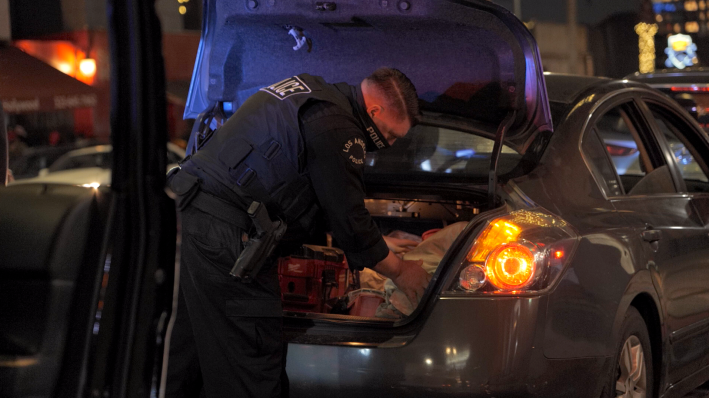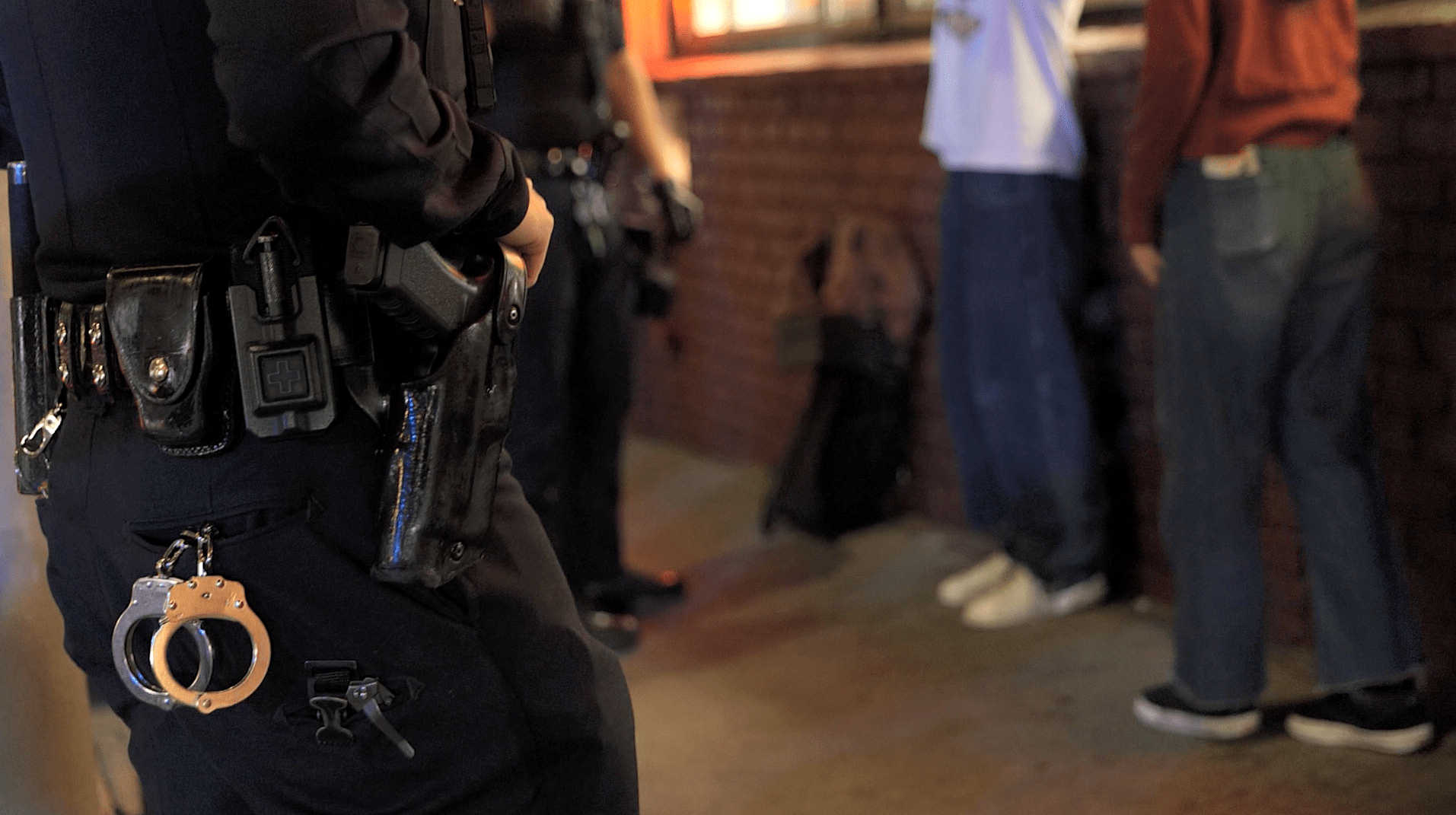Someone climbs over a gate and breaks into a mansion in the Hollywood Hills. While they rob the house, the owner confronts them, and the suspect pulls out a gun and shoots the homeowner, killing them.
Based on the current data collection system that the Los Angeles Police Department (LAPD) uses to compile crime data, because it’s the most severe crime and there was only one victim, only the murder would be logged. Not the trespassing or robbery that took place before the fatal shooting.
That’s about to change, though.
Due to a new federal mandate, thousands of police departments around the country are in the process of switching from a nearly century-old “paper and pencil” method of collecting crime data to a fully digital system that is much more detailed. The transition has been slow, however. Despite having years to get things in order, thousands of police departments, including the LAPD, are behind in transitioning their systems.
A new data analysis by the Marshall Project, a non-profit criminal justice-centered newsroom, found that nearly 40 percent of law enforcement agencies across the country did not contribute any data to the new FBI crime statistics collection program. That translates to roughly 7,000 police departments, including two of the country’s largest agencies: the LAPD and NYPD. The majority of police departments in five of the six most populous states also did not contribute.
Experts say gaps in data will make it more challenging to analyze national crime trends in the coming years. They also fear politicians will exploit a sudden increase in crime due to the new reporting system. “It’s not going to do the national debate over crime levels or crime solutions any good at all,” Richard Rosenfeld, a criminology professor at the University of Missouri-St. Louis told the Marshall Project.
Criminologists and law enforcement sources say they’ve faced hurdles switching over to the new system. Until last year, police were able to use one of two methods for collecting crime data. The Uniform Crime Reporting (UCR) program dates back to the 1930s. Or the National Incident-Based Reporting System (NIBRS), a much more complex digital system of aggregating crime data. Starting in 2021, the FBI began only accepting data from departments using the NIBRS method.
Police officials told the Marshall Project that transitioning their systems is expensive and labor-intensive. According to one officer who works for a record management systems company who spoke to the Marshall Project, acquiring a new data management system that complies with the new FBI requirement can take up to two years.
“We saw this coming,” said LAPD Commander Randy Goddard during a phone interview with L.A. TACO. According to Goddard, the department began thinking about using a new data collection system nearly a decade before it became a mandate but still failed to acquire one to report 2021 crime data to the FBI. The veteran LAPD commander admits he’s “not a tech guy” but says he’s learned a lot over the past two years working in the department’s technology division.
According to Goddard, the LAPD began thinking about overhauling its decades-old crime data system in 2012. The department began searching for a vendor to complete the transition three years later. “The contract was signed in 2017. And then the project was supposed to be completed in 2019,” Goddard explained. Instead, the project dragged on for an extra year.
Then, the pandemic hit, and things fell into limbo. “Finally, in 2021, we kind of asked the vendor, ‘Hey, what is this going to take to get this thing live,’” Goddard recalled. Four years into the project, the vendor told the department they needed another two years to get things up and running. “We just didn’t have the time to wait around to do that. So the contract ultimately expired,” Goddard told L.A. TACO.
Ten years after first seeing the writing on the wall, the LAPD is starting the lengthy process of finalizing a deal with a vendor all over again, this time with Motorola. “Hopefully, that will be going through the public safety committee on the 29th. And then through full council. And hopefully, we’ll be able to execute that contract shortly into the new fiscal year.”
Goddard predicts that obtaining equipment and training officers could take up to 18 months after a contract is approved. The LAPD commander expects a 10% increase in crime when the system is online.
Some experts worry that politicians and public members will exploit the sudden increase in crime data under this new system. Goddard is aware of those concerns, but he points out that the new system will have the largest impact on lower-level crimes such as robberies and aggravated assaults, not major crimes such as homicides. “Homicide would always get counted [under the old system] because it’s the highest, most serious crime that you could commit. But under [the new system], it would also get reported. So if you’re going to compare homicides to each other… that’s going to be apples to apples. But you know, some of the lower offenses that were committed as a result of a homicide… you’re gonna see those go up.”
Goddard also indicated that the California Department of Justice has developed a “conversion tool” to more accurately analyze the two types of data. “They’ve developed kind of a conversion tool, that if you want to look more at apples at apples…they have a conversion tool where you can do that.” Goddard believes that after a couple of years, things will “level off.”

“This is classic LAPD,” Hamid Khan, an organizer with the police watchdog group, Stop LAPD Spying Coalition, told L.A. TACO during an interview. “Just lay the blame on something else.” Khan calls placing the responsibility on the vendor a “red herring.” “This very much works to the LAPD’s benefit.” The community organizer and abolitionist finds the new reporting system “alarming” for several reasons.
Khan starts by highlighting that the police have a history of miscategorizing crimes. A 2014 L.A. Times investigation found that more than 1,000 violent crimes were misclassified as minor offenses. “So there’s a history of misclassification. But I think more than that; the question is: how does LAPD use crime statistics? Like what kind of crime is highlighted? What is the timing of them highlighting the claim?”
Khan points to the recent local elections. “Caruso is talking about getting 11,000 or 15,000 cops, and Karen Bass is saying that, okay, well, we need to have at least 9,700 cops as well. You know, the city council members are there speaking about [crime as well].”
“There’s a whole history if you look at it closely, that whenever there’s conversations about reform or taking resources away from the LAPD, all of a sudden, the sensationalist side of crime reporting happens as well,” said Khan.
Khan is also concerned with how the new data can be used with other technology like AI and “predictive policing” platforms. “[We’ve seen] how the history of crime was being used very effectively to criminalize people by deeming certain locations, particularly in Black and Brown and migrant communities, as being crime triggers.” Khan references the Crenshaw Mall, which was deemed a “hot spot” for crime.
The difference between the two crime statistic collection methods exposes the subjectivity of police-reported crime and data limitations. Crime data only reflect reported crime, not the countless daily offenses that go unreported.
“The concept of ‘crime’ is created and manipulated by people who have power.” Alec Karakatsanis, founder and director of Civil Rights Corps, highlighted in a Twitter thread that most police departments don’t report alleged crimes committed by their own officers. “Throughout U.S. history, powerful people have defined ‘crime’ in ways that benefit wealthy people and white people,” wrote Karakatsanis.
“Many times, we get affixed to crime statistics, and we take them as a fact,” said Khan. “But which community gets to bear the brunt of more policing?”







